
There are lots of exciting events coming up this month and I’m highlighting a few of them below.
I mentioned in my most recent blog that the OATG have arranged a small group visit to the exhibition Peru: a journey in time at the British Museum on Friday 11 February at 14:00 GMT. Cecilia Pardo, lead curator for the exhibition, will give a short talk in the Great court first. Then our Chair, Helen Wolfe, who has recently retired from her role as Textile Collection Manager at the British Museum will take the group through to the exhibition and be available to answer questions. Our tickets are available at a reduced price of £10, payable on the day to Helen. There are still two places available for this very special visit. To reserve one please email our Secretary Cecilia Lloyd.
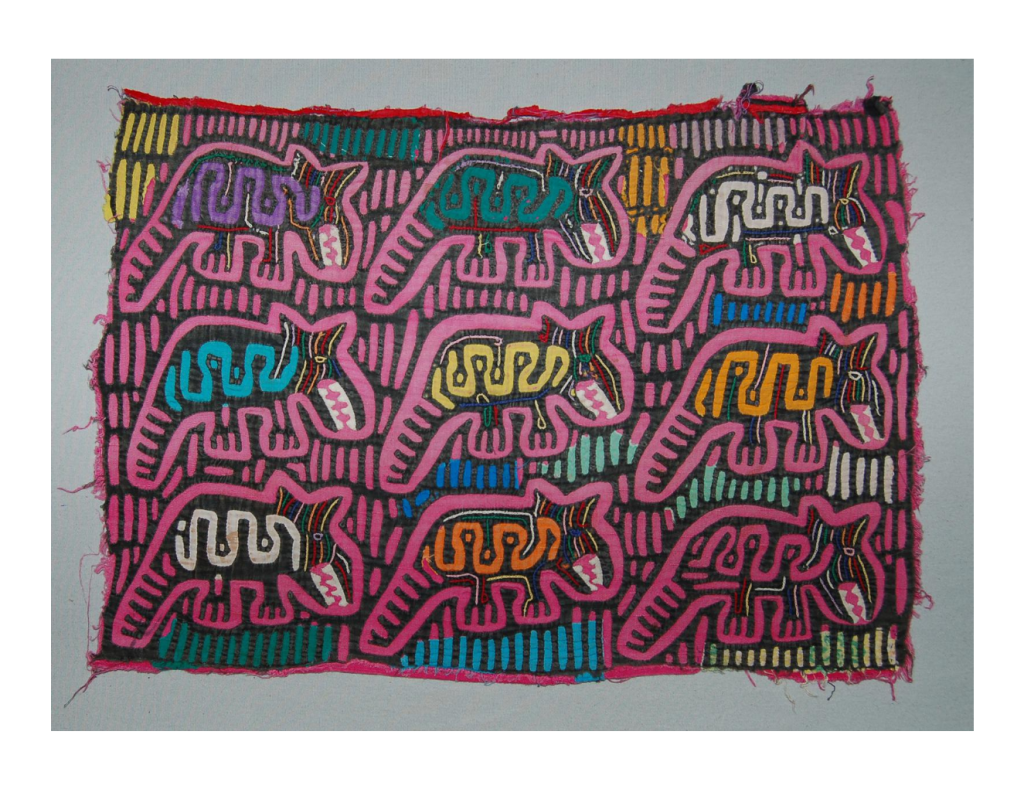
On Saturday 12 February Tom Hannaher will give an online presentation on Painting With Scissors: Mola Art of the Kuna (Guna) Indians. This programme is co-sponsored by the Textile Museum Associates of Southern California and the New England Rug Society. The focus of the presentation will be early and middle-period molas (1910-1970) and will include many rare pieces.
“Molas are panels used in blouses worn by women of the Kuna (Guna) culture of Panama and Colombia. Using a combination of applique, reverse applique, and embroidery, Kuna women create dazzling imagery based on Kuna mythology, customs, and daily life. They also seek graphic inspiration from non-Kuna references ranging from political posters to cartoons to advertising campaigns. This presentation by Tom Hannaher will focus on pre-1970 examples and will include a number of unpublished masterpieces, some from the early part of the twentieth century. Many of the pieces are from the collections of Kit Kapp and Ann Parker Neal, two authors of early books on mola art.” – TMA/SC
The talk begins at 10:00 PST, which is 18:00 GMT.
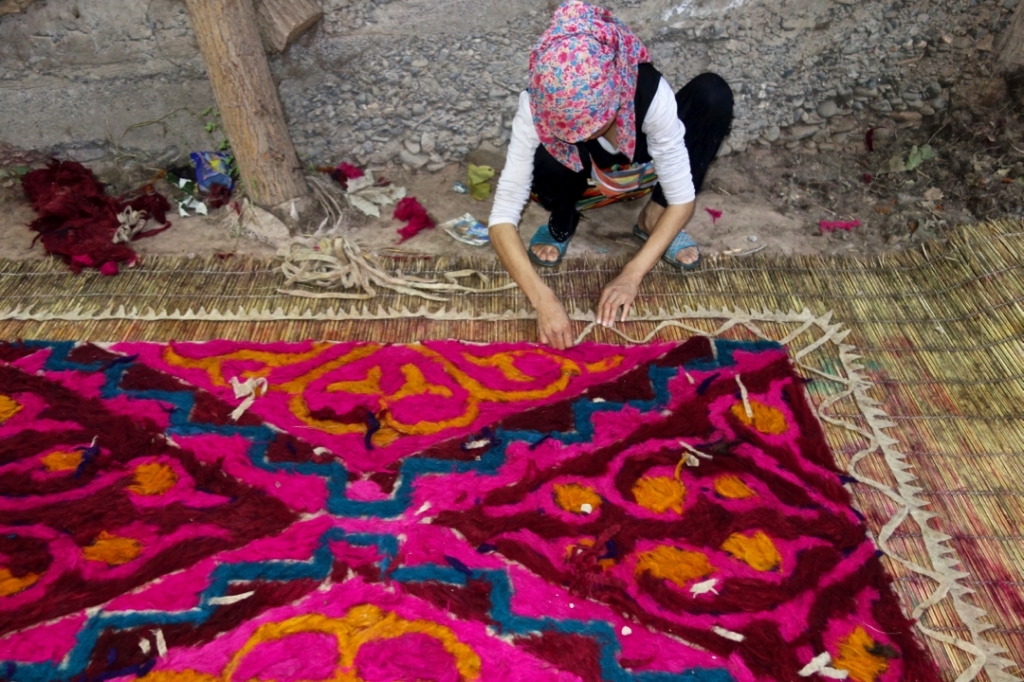
Slightly earlier that same day the Textile Museum will hold its regular Rug and Textile Appreciation Morning by Zoom. The speaker will be Christine Martens and her subject is Distinguishing Uyghur Feltmaking.
“Feltmaking has existed for millennia in the cities and villages of what is now the Xinjiang Uyghur Autonomous Region of northwest China — homeland of the Muslim, Turkic-speaking Uyghurs. Archeological discoveries give a sense of this ancient art, which continued to flourish in the oases that dot the southern rim of the Taklamakan desert.
In this virtual talk researcher Christine Martens examines the felt processes and compares Uyghur felt with the traditions of the Turkmen, Kyrgyz and Turks, including gender roles in felt making.
Martens also examines how Uyghur cultural history and the “everyday” exist within the spiritual landscape of southern Xinjiang. She explores the participation in shrine visitation and the use of the “risala,” a treatise or guidebook governing the moral, spiritual and ethical behavior of artisans, to shed light on little-known aspects of Uyghur sacred history and accompanying rituals.” – TM website
Chris has conducted fieldwork and led tours in Central Asia for many years and I’m sure this will be a fascinating programme. It begins at 11:00 EST, which is 16:00 GMT and you can register for it here.
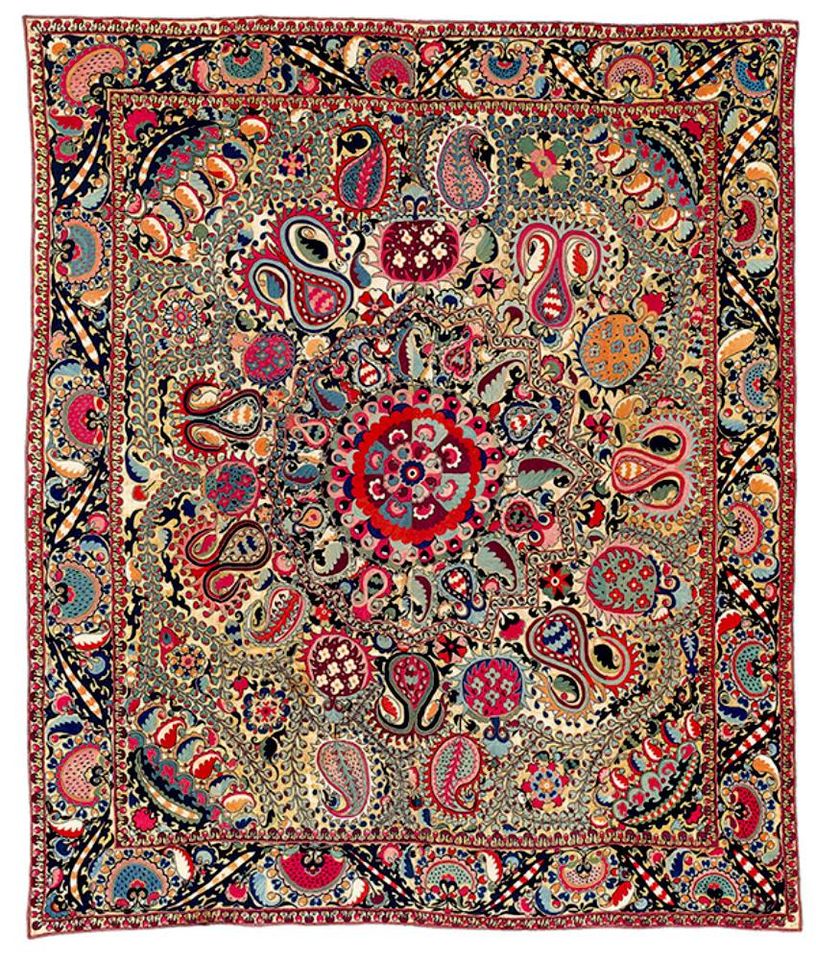
On Thursday 17 February the Hajji Baba Club of New York will be hosting London-based specialist and dealer Ali Istalifi. His online talk is entitled Central Asian Suzani: Understanding the Tradition and Attribution of Silk Dowry Embroideries.
“Over the past half a century, Suzani embroideries of Central Asia have captured the imagination of textile collectors and aficionados around the world. Examples from the late 18th Century up to the early 1900s are now considered as some of the most coveted of all textile arts and most tend to demand high prices at major auctions, antique fairs and galleries.
This talk will explore the aesthetic and artistic merits of these traditional dowry embroideries in order to help understand and appreciate their appeal. By analyzing and categorizing the specific characteristics of design, color, type of stitches and material used to make them, dating and attribution will become easier for both those who are familiar and unfamiliar to this textile art.” – Hajji Baba Club website
The talk begins at 11:00 EST, which is 16:00 GMT . More details and registration available here.
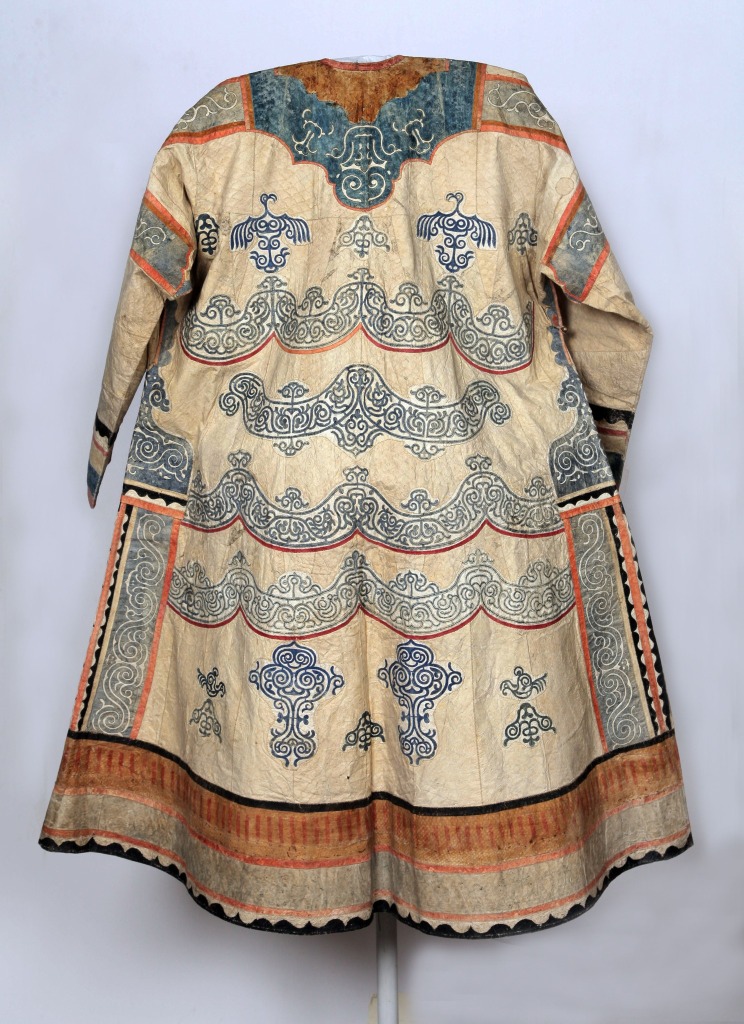
I recently shared a post from the Russian Museum of Ethnography about clothing from fish skins. The robe (pictured above) was stunning and I wanted to learn more about this type of clothing. It appears that the skins used were mainly those of large salmon, and the clothes produced were lightweight and waterproof. Decorations were added in various forms – appliqué, embroidery, and drawing directly on the garment either freehand or using a stencil. It clearly took months to make a robe such as this.
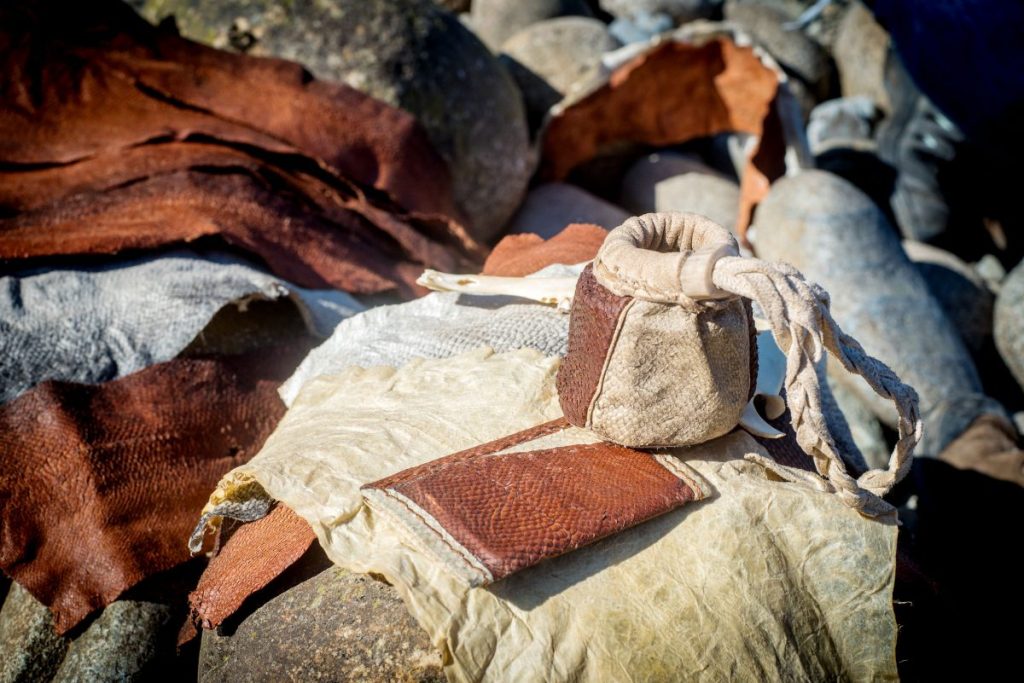
I was delighted to then be directed to this article on The Art of Turning Fish into Leather by Chloe Williams in Hakai magazine. In it she examines how various artists are rediscovering this ancient craft, and explains some of the different methods they have tried – some more successful than others. Coffee, black tea, eggs, alder bark and even urine have all played a part.
The article is also available in audio format here.
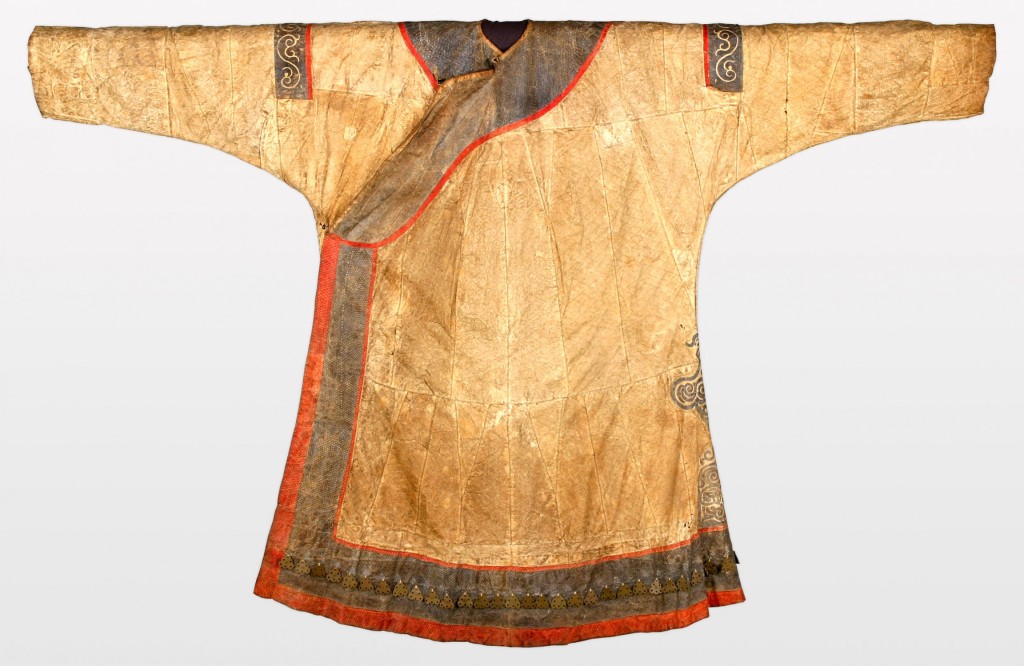
That led me to another Hakai article, this time by Jude Isabella, called The Secret Language of Salmon Skin Coats. She describes how a Nivkhi woman from the Amur River area would have prepared around 100 salmon skins to make one robe. “She would have scraped away the flesh before washing the skins in salt water (women keeping the craft alive today use soap), then drying and beating the skins before piecing together the coat with thread fashioned from fish skin or sinew.” I was amazed to read how the thread expands when it gets wet, meaning that the holes made by the sewing needle are then filled and the garment becomes watertight – ingenious!
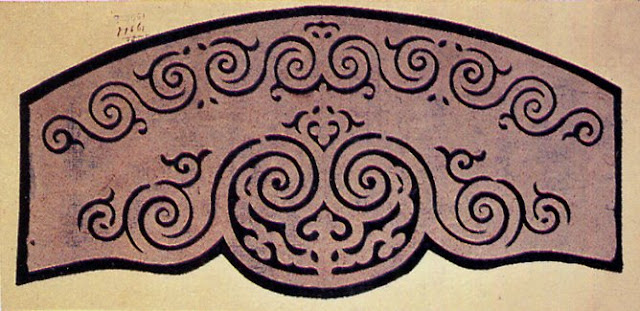
Tom Murray (he of the Textiles of Japan: The Thomas Murray Collection fame) then directed me to this website on the Costume of the Peoples of the Lower Amur, which again has lots of useful and fascinating information and images, including a diagram of the coat construction. The author notes how in some instances the fish skin leather has been dropped in favour of woven cloth, but the motifs have remained in the form of appliqué. He also includes many excellent black and white images. Tom has also informed me that the long-awaited Minneapolis Institute of Art exhibit based on his book will open in June and will feature not one but two salmon skin robes!
